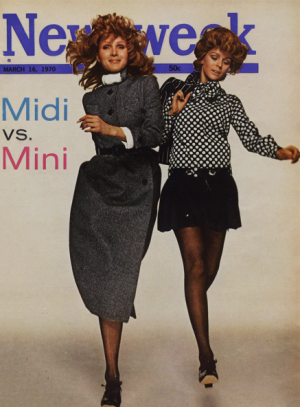IsabelMarantBoy
Well-Known Member
- Joined
- Sep 7, 2011
- Messages
- 1,076
- Reaction score
- 524
Hi everyone! First time making a thread here  so I hope this isn't a strange topic to bring up, but after watching runway shows for almost 20 years I thought this might be a good subject to discuss: has anyone else noticed the decline of seasonal trends amongst designer collections?
so I hope this isn't a strange topic to bring up, but after watching runway shows for almost 20 years I thought this might be a good subject to discuss: has anyone else noticed the decline of seasonal trends amongst designer collections?
I feel like looking at old runway seasons (let's say Spring 2007 for example) it felt like there were collections from different designers that referenced seasonal trends. You could see multiple designers referencing Futurism, Victoriana, 1960's/1970's and so forth. It felt like back then, there were through lines of trends and it was easy to tell each season apart.
It almost feels like now, nobody is referencing each other and it all feels so separate. Balenciaga always looks like Balenciaga (oversized streetwear and trench coats), Chanel always looks like Chanel (tweed suits and dresses), Prada always looks like Prada, etc.....
It's very evident when the looks from each season hit the editorials. Back in the day, you could see stylists put together shoots based around the seasonal trends and could pull from multiple collections to create a cohesive shoot. Now when you look at editorials they often feel disjointed and jumbled together rather than having a singular vision/look.
Is it due to the corporatization of fashion? The lack of "good" designers? I'd like to hear other people's opinions and see how they feel about this!
 so I hope this isn't a strange topic to bring up, but after watching runway shows for almost 20 years I thought this might be a good subject to discuss: has anyone else noticed the decline of seasonal trends amongst designer collections?
so I hope this isn't a strange topic to bring up, but after watching runway shows for almost 20 years I thought this might be a good subject to discuss: has anyone else noticed the decline of seasonal trends amongst designer collections?I feel like looking at old runway seasons (let's say Spring 2007 for example) it felt like there were collections from different designers that referenced seasonal trends. You could see multiple designers referencing Futurism, Victoriana, 1960's/1970's and so forth. It felt like back then, there were through lines of trends and it was easy to tell each season apart.
It almost feels like now, nobody is referencing each other and it all feels so separate. Balenciaga always looks like Balenciaga (oversized streetwear and trench coats), Chanel always looks like Chanel (tweed suits and dresses), Prada always looks like Prada, etc.....
It's very evident when the looks from each season hit the editorials. Back in the day, you could see stylists put together shoots based around the seasonal trends and could pull from multiple collections to create a cohesive shoot. Now when you look at editorials they often feel disjointed and jumbled together rather than having a singular vision/look.
Is it due to the corporatization of fashion? The lack of "good" designers? I'd like to hear other people's opinions and see how they feel about this!



